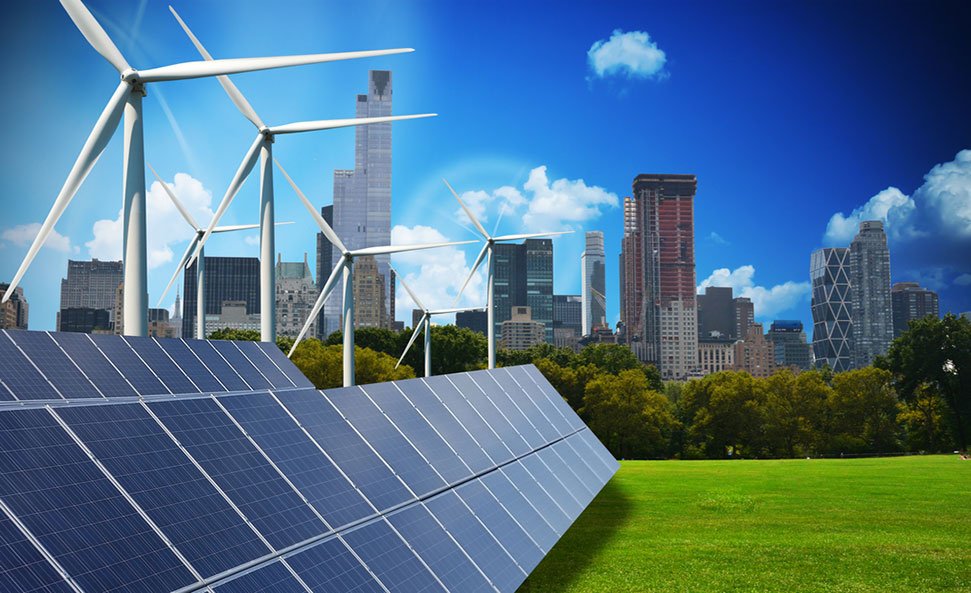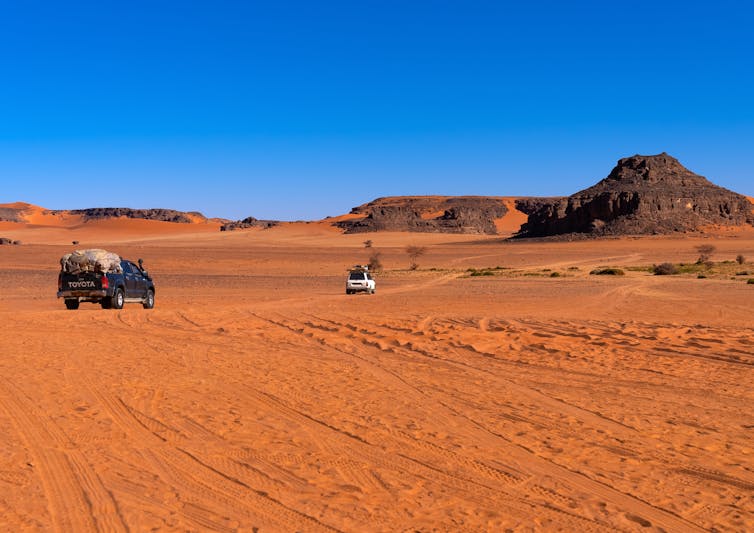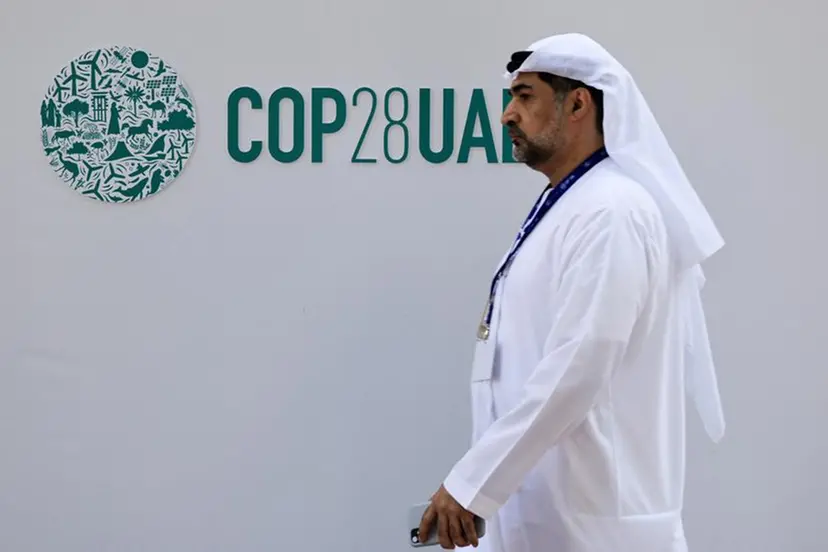Similarly, in Qatar the state’s footprint in the economy and support measures helped reduce COVID-19’s effects on the banking system. However, we remain concerned about the system’s build-up of external debt, which has been exacerbated by abundant global liquidity and the otherwise favorable credit profiles of large Qatari banks. That said, we take comfort from the government’s highly supportive stance toward its banking system.
In Kuwait, concerns center on the government’s capacity to strike a deal with parliament to fund its fiscal deficit. In the absence of such a solution and disruptive government expenditure adjustments, the hit to the economy and banking sector could have deeply adverse implications for financial stability. This could also lead us to question our current expectations of government support to the banking sector in case of need.
We consider the Saudi Arabian banking system the least vulnerable in the current environment. In our view, Saudi banks will continue to benefit from mortgage growth and the implementation of Vision 2030, which we expect will boost asset quality and profitability indicators.
Overall, GCC banks’ profitability stabilized in first-half 2021 due to still-high cost of risk and stable interest margins. In the absence of further shocks–pandemic or nonpandemic related–we expect this to continue in second-half 2021, aided by careful cost control. We also expect banks’ capitalization will remain supportive of their creditworthiness. In this publication, we further explore the financial performance of selected GCC banking systems in first-half 2021 and outline our base case for the remainder of the year.
Kuwait: Resolving The Fiscal Impasse Will Be Key
We expect higher earnings supported by improved revenue. Kuwaiti banks (systemwide metrics refer to our sample of rated banks in Kuwait comprising more than 50% of sector loans) reported stronger earnings in first-half 2021 compared with the same period last year, supported by lower cost of risk and improved revenue generation. In 2020, banks’ revenue was hit by the deferral of exposures (interest income payment deferrals were recognized on banks’ profit-and-loss statements with no late payment fees) enacted by the central bank to manage the pandemic’s effects on the local economy. However, in fourth-quarter 2020, lower cost of funding caught up with lower asset yields from the U.S. Federal Reserve’s rate cuts, improving banks’ margins into first-quarter 2021. Margins (calculated on loans) remained relatively unchanged between first-half 2020 and first-half 2021, while benefiting from a recovery in noninterest income, offsetting higher costs. Annualized cost of risk also somewhat declined–20 basis points (bps) in first-half 2021 versus 2020–as the Kuwaiti economy slowly reopened and given banks took already a significant hit in 2020. Stage 2 loans continued to increase, reaching 9.6% of total loans at June 30, 2021, compared with 8.5% at year-end 2020. However, Stage 3 loans remained low at 2.5% of total loans at June 30, 2021, versus 2.6% at year-end 2020, thanks to continued regulatory support.
We expect additional pressure on asset quality toward second-half 2021 as support measures are lifted. We expect banks’ earnings to partially recover this year, exceeding 2020 levels but still below 2019, mainly supported by improved margins. We expect rated banks’ cost of risk to slightly increase to about 1.5% in 2021 from about 1.4% in 2020 as forbearance measures are progressively lifted. We also forecast further pressure from the real estate sector, with rated banks’ nonperforming loans (NPLs) to reach 2.7% of total loans in 2021 from 2.6% in 2020. This compares to our domestic systemwide NPL forecast of 3.4% in 2021, from 2.1% in 2020. We note that our sample of rated banks generally have stronger asset quality than the wider banking sector.
Government support will continue for now. The Kuwaiti government’s persistent lack of a comprehensive funding strategy, despite the central government’s ongoing sizable deficits, raises concerns. Due to parliamentary opposition, the government has so far been unable to pass a law giving it the authority to issue debt or gain immediate access to its large stock of accumulated assets. The authorities have in the meantime relied on the General Reserve Fund (GRF) to meet budgetary requirements, depleting it in the process. Our base-case expectation remains that the government will eventually adopt a new debt law or gain access to alternative funding. However, in the short term, we believe the continued fiscal funding impasse and further potential GRF depletion could question the government’s ability to provide timely support to Kuwaiti banks in a downturn. This could adversely affect our view of banks’ creditworthiness.
| Kuwaiti Banks* |
|
Net interest margin (%) |
|
Return on assets (%) |
|
NPL ratio (%) |
|
Cost of risk (%) |
|
2019 |
2020 |
2021F |
|
2019 |
2020 |
2021F |
|
2019 |
2020 |
2021F |
|
2019 |
2020 |
2021F |
| National Bank of Kuwait S.A.K. |
2.58 |
2.31 |
2.50 |
|
1.53 |
0.89 |
1.04 |
|
1.10 |
1.72 |
2.70 |
|
0.78 |
1.40 |
1.30 |
| Boubyan Bank K.S.C.P. |
2.75 |
2.68 |
2.60 |
|
1.30 |
0.57 |
0.57 |
|
0.84 |
1.12 |
1.38 |
|
0.53 |
1.33 |
1.30 |
| Burgan Bank |
2.59 |
2.24 |
2.14 |
|
1.18 |
0.48 |
0.55 |
|
2.38 |
3.83 |
4.40 |
|
0.74 |
1.48 |
1.66 |
| Gulf Bank |
2.79 |
2.12 |
2.30 |
|
1.04 |
0.47 |
0.72 |
|
1.16 |
1.17 |
1.85 |
|
1.44 |
1.44 |
1.33 |
Qatar: External Debt Remains In Focus
We expect the subdued private sector to show signs of recovery. Overall credit growth in Qatar’s private sector, at just under 5% over first-half 2021 (excluding lending to the government but including other public sector entities), indicates much more subdued activity compared with 8% over the same period last year and an annual average growth rate of 14% over 2019–2020. Notable in this data is the brisk expansion in consumption lending, which has increased by the same amount as it did annually in 2019 and 2020, indicating that retail confidence has improved faster than corporate sentiment. However, we expect the latter will improve over the second half, with momentum behind a recovery building. We maintain our private sector growth estimate of about 8% for the year.
Public sector activity is highly visible on both sides of the balance sheet. Qatar’s public sector accounts for at least one-third of total credit directly and more indirectly. Credit extended directly to the government increased to 15% of total credit at June 30, 2021, from just under 10% at June 30, 2020, and accounted for nearly 60% of total credit growth. Overdrafts to the Ministry of Finance comprised the majority and increased nearly 80%, or $15 billion, easily offsetting a decline in loans. We believe these facilities made up most lending for some banks in the first half, including a significant proportion for the biggest lenders. The government’s fiscal position remains solid, however, and public sector deposits in the system increased almost $8 billion to total about $80 billion over the same period, just shy of their 2017 boycott-related peak. Private sector deposits remained flat, meaning the public sector accounted for almost all domestic deposit growth.
We expect the government and wider public sector’s footprint will remain highly visible in the local economy, and that lending to the government will continue to account for a significant portion of total credit. Although this will help to contain NPL formation (we expect a systemwide NPL ratio peak of about 3.3%-3.5% from 2.7% in 2019), related margin is likely lower than when funding private sector activity. We view an increase in these overdraft facilities as less likely, following relative stability in the second quarter, and because we expect improving demand to support earnings. As the pandemic’s effects continue, we expect the real estate sector and exposures outside Qatar–particularly in Turkey–to maintain credit losses at an elevated level this year and next. Coupled with weak operating conditions over first-half 2021 and continued low interest rates, we expect that Qatari banks will exhibit lower profitability this year and narrow interest margins through 2022.
Nonresident deposits increased roughly the same amount as domestic deposits over first-half 2021, but there are signs of stabilization. Nonresident deposit levels fell slightly in the second quarter, after a significant increase in the first quarter, which was likely in part linked to normalizing relations with GCC neighbors. Still, on aggregate, nonresidents fund nearly 40% of domestic loans and, given limited domestic sources of funding outside the public sector, more volatile foreign liabilities could continue to fund larger proportions of local lending. Although the public sector has demonstrated its ability to support banks, Qatar is becoming more exposed to the risk of a sudden shift in investor sentiment that could be increasingly costly to contain. Although extremely destabilizing events are less likely, they have occurred in the recent past and could materialize because of geopolitical risk, a sharp decline in oil price, or simply a shift in global liquidity conditions instigated by developed market central banks. Pandemic-related risks remain, although the country has made good progress in terms of vaccination rates.
| Qatari Banks* |
|
Net interest margin (%) |
|
Return on assets (%) |
|
NPL ratio (%) |
|
Cost of risk (%) |
|
2019 |
2020 |
2021F |
|
2019 |
2020 |
2021F |
|
2019 |
2020 |
2021F |
|
2019 |
2020 |
2021F |
| Qatar National Bank (Q.P.S.C.) |
2.45 |
2.33 |
2.25 |
|
1.61 |
1.23 |
1.22 |
|
1.85 |
2.12 |
2.51 |
|
0.50 |
0.84 |
0.80 |
| Qatar Islamic Bank Q.P.S.C. |
2.61 |
2.75 |
2.50 |
|
1.89 |
1.79 |
1.49 |
|
1.24 |
1.37 |
2.74 |
|
0.66 |
1.08 |
1.06 |
| Commercial Bank (P.S.Q.C.) (The) |
2.36 |
2.31 |
2.30 |
|
1.43 |
0.87 |
1.39 |
|
4.89 |
4.28 |
4.39 |
|
1.19 |
1.68 |
0.96 |
UAE: Government Support Is Key
The extension of the support scheme is helping the sector. UAE banks’ performance was slightly better in first-half 2021 than first-half 2020 on the back of lower cost of risk, in part due to large provisions taken by banks for one-off cases in the previous year. The extension of the TESS measures has given corporates impacted by the pandemic more breathing room to restore their financial profiles. At the same time, the macroeconomic environment has started to improve thanks to higher oil prices and strong vaccination rates. However, asset repricing, to reflect lower rates, reduced margins and partly offset the positive effects of lower cost of risk in first-half 2021. We expect this trend to continue in the second half, with banks posting slightly better results for full-year 2021.
We expect asset quality to remain weak over the next 18 months. The extension of TESS measures–including the requirement that banks not classify exposures as nonperforming if the borrowers suffered from cash flow pressures related to the pandemic–means the actual extent of asset quality problems is not fully visible on banks’ balance sheets. At June 30, 2021, Stage 3 loans as a percentage of gross loans stood at 6.0%, compared with 6.1% at year-end 2020. Stage 2 loans stood at 7.2% for the first half. We anticipate that NPLs will peak in 2022 once forbearance measures are lifted and banks start recognizing the full extent of asset quality problems. Notably, the COVID-19-induced economic shocks came at a time when the real estate sector was already under significant stress. Other sectors, such as hospitality and discretionary consumer goods, have also experienced a significant decline in revenue, weighing on credit quality.
We expect the government to continue supporting the banking system. The UAE government has been highly supportive of its banking system throughout various past crises, injecting the necessary liquidity and capital support when needed. We expect this support to continue in the future as authorities drag their feet on the adoption of a resolution regime.
| UAE Banks* |
|
Net interest margin (%) |
|
Return on assets (%) |
|
NPL ratio (%) |
|
Cost of risk (%) |
|
2019 |
2020 |
2021F |
|
2019 |
2020 |
2021F |
|
2019 |
2020 |
2021F |
|
2019 |
2020 |
2021F |
| Abu Dhabi Commercial Bank PJSC |
3.08 |
2.75 |
2.40 |
|
1.41 |
0.95 |
1.05 |
|
4.78 |
8.03 |
9.30 |
|
1.10 |
1.58 |
1.18 |
| Mashreqbank |
3.20 |
2.17 |
2.40 |
|
1.44 |
(0.77) |
0.49 |
|
4.48 |
6.11 |
5.66 |
|
1.53 |
4.19 |
2.14 |
| Sharjah Islamic Bank |
2.26 |
2.23 |
2.20 |
|
1.20 |
0.81 |
0.76 |
|
5.14 |
4.89 |
6.06 |
|
0.37 |
0.90 |
1.26 |
| First Abu Dhabi Bank P.J.S.C. |
2.25 |
1.99 |
1.80 |
|
1.65 |
1.24 |
0.86 |
|
3.17 |
3.91 |
4.31 |
|
0.46 |
0.63 |
0.72 |
| National Bank of Fujairah PJSC |
3.51 |
2.79 |
2.80 |
|
1.40 |
(1.20) |
0.31 |
|
5.44 |
10.05 |
11.97 |
|
2.12 |
4.93 |
2.97 |
Saudi Arabia: Rapid Lending Growth To Continue
System performance has been solid so far. Saudi banks’ performance was broadly in line with our expectations with two notable deviations. First, credit to the domestic private sector increased much faster than we forecast at 9.7%. This was because of faster-than-expected mortgage growth, with year-to-date origination already exceeding our expectations for full-year 2021, and a sharp increase in corporate lending in the first quarter. Second, systemwide average cost of risk was better than we expected at about 0.8%-0.9%, including one-offs related to the National Commercial Bank and Samba Financial Group merger. Although lower cost of risk is in part driven by high credit growth, it also demonstrates stronger nonoil sector performance, as evidenced by purchasing managers’ indexes in positive territory. Net special commission margins stood broadly flat at about 3% on a weighted-average basis with lower margins on corporate business due to a lower Saudi Arabian Interbank Offered Rate–offset by an increase in retail business and higher loans-to-assets ratio. Overall, Saudi banks’ profitability was slightly better than expected with return on assets reaching 1.6% at June 30, 2021, compared with 1.3% at year-end 2020.
We expect this strong performance to continue. We now expect credit growth to reach about 15% in 2021, highly skewed toward retail and particularly mortgage lending. We also expect cost of risk to remain stable at about 90 bps-100 bps from 100 bps at year-end 2020, to reflect stronger banking sector performance. This also signifies the gradual phase-out of small and midsize enterprise support programs and our less optimistic GDP and oil price projections. Despite increasing vaccination rates, the evolution of COVID-19 strains and possible introduction of health-related restrictions across the globe can directly affect oil prices, with knock-on effects for Saudi’s fiscal revenue and nonoil sector. Weaker payment discipline and reallocation of funds between projects can also hit Saudi banks’ asset quality, although this would probably create some funding demand from government-related entities.
| Saudi Arabian Banks* |
|
Net interest margin (%) |
|
Return on assets (%) |
|
NPL ratio (%) |
|
Cost of risk (%) |
|
2019 |
2020 |
2021F |
|
2019 |
2020 |
2021F |
|
2019 |
2020 |
2021F |
|
2019 |
2020 |
2021F |
| Saudi National Bank |
3.73 |
3.50 |
3.00 |
|
2.39 |
2.09 |
1.62 |
|
1.84 |
1.72 |
1.91 |
|
0.51 |
0.60 |
0.92 |
| Saudi Investment Bank (The) |
2.57 |
2.61 |
2.45 |
|
0.24 |
0.98 |
0.68 |
|
5.65 |
4.33 |
4.11 |
|
2.23 |
0.77 |
1.19 |
| Al Rajhi Bank |
5.05 |
4.53 |
4.15 |
|
2.72 |
2.48 |
2.32 |
|
0.93 |
0.78 |
0.69 |
|
0.71 |
0.75 |
0.71 |
| Arab National Bank |
3.53 |
3.00 |
2.90 |
|
1.67 |
1.14 |
1.14 |
|
2.10 |
3.52 |
3.57 |
|
0.69 |
1.06 |
1.08 |
| Banque Saudi Fransi |
3.12 |
3.07 |
2.90 |
|
1.69 |
0.83 |
1.23 |
|
2.64 |
2.78 |
2.90 |
|
0.76 |
2.02 |
1.14 |
| Riyad Bank |
3.50 |
3.28 |
3.05 |
|
2.26 |
1.64 |
1.54 |
|
1.01 |
2.03 |
2.32 |
|
0.58 |
1.13 |
0.85 |
This report does not constitute a rating action.
No content (including ratings, credit-related analyses and data, valuations, model, software or other application or output therefrom) or any part thereof (Content) may be modified, reverse engineered, reproduced or distributed in any form by any means, or stored in a database or retrieval system, without the prior written permission of Standard & Poor’s Financial Services LLC or its affiliates (collectively, S&P). The Content shall not be used for any unlawful or unauthorized purposes. S&P and any third-party providers, as well as their directors, officers, shareholders, employees or agents (collectively S&P Parties) do not guarantee the accuracy, completeness, timeliness or availability of the Content. S&P Parties are not responsible for any errors or omissions (negligent or otherwise), regardless of the cause, for the results obtained from the use of the Content, or for the security or maintenance of any data input by the user. The Content is provided on an “as is” basis. S&P PARTIES DISCLAIM ANY AND ALL EXPRESS OR IMPLIED WARRANTIES, INCLUDING, BUT NOT LIMITED TO, ANY WARRANTIES OF MERCHANTABILITY OR FITNESS FOR A PARTICULAR PURPOSE OR USE, FREEDOM FROM BUGS, SOFTWARE ERRORS OR DEFECTS, THAT THE CONTENT’S FUNCTIONING WILL BE UNINTERRUPTED OR THAT THE CONTENT WILL OPERATE WITH ANY SOFTWARE OR HARDWARE CONFIGURATION. In no event shall S&P Parties be liable to any party for any direct, indirect, incidental, exemplary, compensatory, punitive, special or consequential damages, costs, expenses, legal fees, or losses (including, without limitation, lost income or lost profits and opportunity costs or losses caused by negligence) in connection with any use of the Content even if advised of the possibility of such damages.
Credit-related and other analyses, including ratings, and statements in the Content are statements of opinion as of the date they are expressed and not statements of fact. S&P’s opinions, analyses and rating acknowledgment decisions (described below) are not recommendations to purchase, hold, or sell any securities or to make any investment decisions, and do not address the suitability of any security. S&P assumes no obligation to update the Content following publication in any form or format. The Content should not be relied on and is not a substitute for the skill, judgment and experience of the user, its management, employees, advisors and/or clients when making investment and other business decisions. S&P does not act as a fiduciary or an investment advisor except where registered as such. While S&P has obtained information from sources it believes to be reliable, S&P does not perform an audit and undertakes no duty of due diligence or independent verification of any information it receives. Rating-related publications may be published for a variety of reasons that are not necessarily dependent on action by rating committees, including, but not limited to, the publication of a periodic update on a credit rating and related analyses.
To the extent that regulatory authorities allow a rating agency to acknowledge in one jurisdiction a rating issued in another jurisdiction for certain regulatory purposes, S&P reserves the right to assign, withdraw or suspend such acknowledgment at any time and in its sole discretion. S&P Parties disclaim any duty whatsoever arising out of the assignment, withdrawal or suspension of an acknowledgment as well as any liability for any damage alleged to have been suffered on account thereof.
S&P keeps certain activities of its business units separate from each other in order to preserve the independence and objectivity of their respective activities. As a result, certain business units of S&P may have information that is not available to other S&P business units. S&P has established policies and procedures to maintain the confidentiality of certain non-public information received in connection with each analytical process.
Source:
Zeina Nasreddine
Associate, Financial Institutions Ratings
S&P Global Ratings
zeina.nasreddine@spglobal.com
https://www.spglobal.com/























